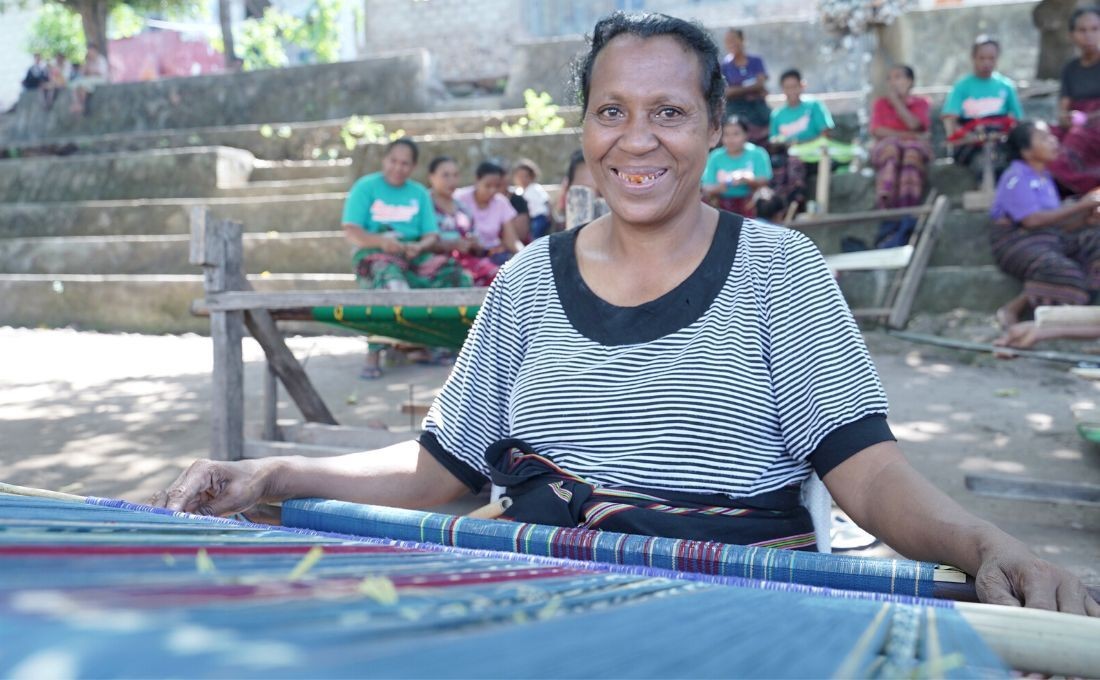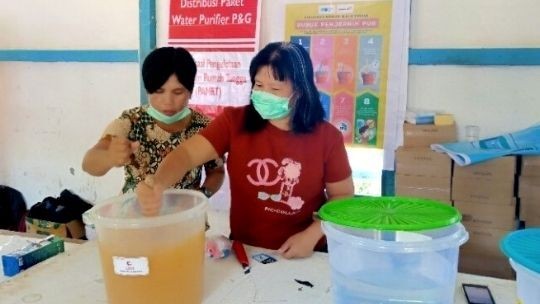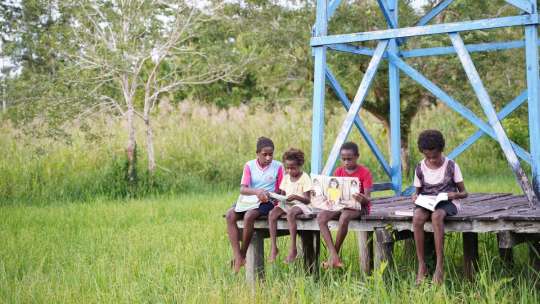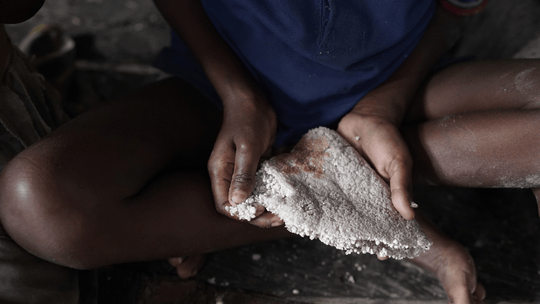The Hands that Never get Tired

If you visiting East Nusa Tenggara (NTT) please stop by for a moment on the island of Alor. The natural beauty of this island is amazing. The sea and the blue sky can make anyone fall in love with the beauty. Not only nature, but the island of Alor also has a myriad of stories of cultural beauty, including the work of Alor's ikat weaving which is known worldwide.
Alor Regency is indeed famous for its eye-catching, colorful ikat weavings. A visit to see the process of making Alor ikat weaving has even become a tourist attraction in Alor Regency. The South Ternate region in one of the Northwest Alor sub-districts is one of the islands whose people earn their living from weaving and sailing. From the nimble hands of the women (commonly called: Mama) on this island, hundreds of Alor ikat weavings are created every month.
Wahana Visi Indonesia (WVI) through the Tenun Alor project, funded by the New Zealand Embassy, was present to accompany ninety women of weavers in the South Ternate region. Economic empowerment was carried out for one year, right when the Covid-19 pandemic was rampant in Indonesia. The women are accompanied, given training, and invited to contribute to the family economy.
Three weaving groups from three villages were successfully formed through the Tenun Alor project. Mama Tirsa (47), one of the heads of the weaving group, said that women in the weaving group have received various benefits from WVI's assistance, especially in terms of weaving techniques.
“The weaving technique used to be different from what WVI taught. The technique of weaving blows is also different. Before, it was not strong. After WVI helped us, there was a change, because now the fabric is wide and high. So, if we hold it, it's a bit heavy," said Tirsa.
Tirsa also shared that since the mentoring by the Tenun Alor project, it is easier for weavers to get yarn. In fact, in the past, they had to cross the ocean to the capital city only to buy good quality yarn and dyes.
Through the cash voucher program, WVI provides an opportunity for ninety weavers to get several threads, as their capital to produce even better weaving. WVI also collaborates with vendors and village-owned enterprises (BUMDes) to provide yarn in the South Ternate area.
Mama Lindeman, one of the yarn vendors, confirmed this. She explained that everyone could get a certain amount of yarn and dye. Although Mama Lindeman sells yarn before the project began, she admits that she has the intention of helping the weavers in her area, so it is not difficult for her to accept the offer as a vendor by WVI.
With the convenience provided by WVI, the activity of weaving is increasingly popular with young women. Henderina (30), started weaving at the age of 24. Although she already knows how to weave a few years ago, she admits that she started to have a passion for weaving since the Alor Weaving project entered to provide teaching and mentoring.
Not only related to weaving and its techniques, Henderina added, weavers under WVI's assistance also gain new knowledge. Henderina remembers the first thing WVI taught her very well.
“At first, we were trained to count money, then we were taught about gender differences. After that, we were trained again in the weaving industry by two facilitators. Then we were taught how to weave, how dye yarn, and tie motifs. Then we just received the yarn voucher and we started working,” said Henderina.
She admitted that the results of weaving produced by weavers in South Ternate are now gradually improving. According to her, with the latest weaving techniques, the color of the weaving will not fade easily and the weaving results will be tighter.
In addition, Henderina said she was happy with this assistance because apart from weavers, children in the South Ternate area also benefited from this project. Because of this project, elementary schools in South Ternate have started to incorporate a weaving curriculum, so that every child is reminded to continue to maintain Alor culture through making ikat weaving.
Empowerment through the Latest Marketing Techniques
The income of weavers in South Ternate is not massive. In the past, they would only make weaving if there was an order. Orders even came only from relatives across the island. Word-of-Mouth Marketing, as this technique is commonly known.
There are also weavers in one village who peddle their woven products by selling from house to house, crossing the ocean to the capital city, or around mountainous areas. Usually, they walk in groups of up to five people and carry at least ten woven clothes.
"Never go home before selling" is their motto. As a result, the weavers who are women have to leave the house for up to a week.
WVI saw this concern. Through the Tenun Alor project, weavers are taught to add to their marketing techniques. Not only accepting orders or selling tiredly but also selling them through social media through digital marketing techniques.
Anceneri (30), is one of the weavers and digital marketing actors. He admitted that previously he did not understand how to sell goods online. He never even thought that digital marketing could help increase the income of weavers in South Ternate.
“In this project, we learned how to sell online through various media such as Whatsapp, Facebook, and Instagram. We were also taught how to take pictures, compose sales sentences, how negotiate with buyers, and even sell live on social media,” explained Anceneri.
Anceneri is excited to implement this new marketing technique, although he admits that he still needs skills in terms of selling live and packing goods outside the region.
Met in a different place, Nonce Rudianakala (41), as the Non-Governmental Function of the Alor Regency Industry Office, said that the marketing of Alor ikat weaving is still fairly conventional. Even so, Alor ikat weaving is well known nationally and even internationally.
"Weaving Alor has been known since 2005 ... In Alor itself, Expo Alor is usually held as a promotional event, and every stand must display Alor weaving, so the promotion process is very fast," said Nonce.
Nonce said, since the Covid-19 pandemic occurred, many weavers have brought their woven products to the Tourism Office. The abundance of weaving results but not being sold due to the pandemic has made it difficult for weavers to get income. They are even willing to sell weaving at a very cheap price unlike the price before the pandemic occurred.
"We help them to do promotions through social media, and cooperate with several parties such as Dekranasda, and several art shops, because they need to meet the needs of their families," she added.
The Head of Industrial Business Cooperation at the Alor Regency Industry Office, Imanuel Maitia (48) when met by WVI, said that his party would continue to assist weavers in Alor, including weavers in the South Ternate region.
"In the future, coaching will be our focus at the Department of Industry. The construction continues. After the coaching, there will be a production process from the group (weaving), and it will be followed up by the relevant agencies, for example, involving them in events that can promote their work, both locally and nationally," he concluded.
Written by: Putri ianne Barus, Communications Officer, Wahana Visi Indonesia



